#cell culture microbiology
Explore tagged Tumblr posts
Text
Enhancing Research with Mediray: The Importance of Cell Culture Incubators in Primary Cell Culture
In the world of biological research and medical science, the study of cells and their environments is a cornerstone for discovering new treatments, understanding diseases, and advancing innovations in biotechnology. One of the most critical tools in cellular research is the cell culture incubator, which plays a crucial role in creating an environment where cells can grow, survive, and proliferate. Mediray, a leading supplier of laboratory equipment in New Zealand, is renowned for providing high-quality solutions for researchers, including state-of-the-art cell culture incubators.
This article explores the significance of cell culture incubators, the concept of primary cell culture, and how Mediray’s offerings ensure the success of these essential processes in research settings.
Understanding Cell Culture Incubators
A cell culture incubator is a specialized piece of laboratory equipment designed to maintain an ideal environment for the growth and maintenance of cultured cells. These incubators regulate several key factors necessary for cell survival, such as temperature, humidity, CO₂ levels, and sometimes O₂ levels, to create the best conditions for cells to grow.
In cellular biology, the growth of cells outside of their natural environment (in vitro) is vital for many applications, including drug development, cancer research, gene therapy, and regenerative medicine. The cell culture incubator provides the controlled atmosphere required for cells to mimic their in vivo environment as closely as possible, ensuring their healthy growth and proliferation.
Mediray provides advanced cell culture incubators designed to meet the varied needs of researchers in cell biology, ensuring precise control over environmental conditions. Whether for routine maintenance of cell lines or more complex research, Mediray’s incubators are engineered for optimal performance, providing researchers with reliable tools for their work.
The Role of Primary Cell Culture in Research
Primary cell culture refers to the process of isolating cells directly from tissues or organs to grow them in culture. Unlike immortalized cell lines, which are continuous and can divide indefinitely, primary cell culture involves the initial establishment of cells in vitro from living organisms. These cells are taken from animal or human tissues and are considered to be much closer to the biological conditions found in the body.
One of the main challenges in primary cell culture is maintaining the cells' characteristics and functions. Since these cells have only a finite lifespan, they must be carefully nurtured under very specific conditions, and any deviation from the ideal environmental factors can lead to cell death or changes in cell behavior. This is where the precise environmental control of a cell culture incubator becomes vital. Ensuring the correct temperature, CO₂ concentration, and humidity levels is crucial for maintaining the functionality and longevity of primary cell cultures.
Mediray understands the complexity of working with primary cell culture and offers incubators with cutting-edge features that help researchers maintain these delicate cells in optimal conditions. Their incubators are designed with the flexibility to accommodate a range of primary cells, whether for research involving skin cells, muscle cells, or even more specialized cell types like stem cells or neuronal cells.
How Mediray’s Cell Culture Incubators Benefit Primary Cell Culture
Mediray’s cell culture incubators are engineered to ensure precise environmental control, which is essential for primary cell culture. These incubators provide users with the ability to set and monitor temperature, CO₂ levels, and humidity – all factors that are critical for cell health. Let’s explore some of the benefits Mediray’s incubators offer in maintaining primary cell culture:
1. Stable Temperature Control
Temperature is one of the most critical factors in maintaining the health of primary cell cultures. Cells can easily become stressed or damaged if the temperature fluctuates beyond the optimal range. Mediray’s cell culture incubators are designed to maintain stable temperatures, typically between 36 and 38 degrees Celsius, to match the natural body temperature for mammalian cells. The precise temperature control ensures that cells thrive in an environment that mimics the conditions in vivo.
2. CO₂ Regulation
CO₂ levels in an incubator need to be closely controlled because they regulate the pH of the growth medium. Cells in primary cell culture require a constant pH to maintain metabolic functions and ensure proper growth. Mediray’s incubators feature automated CO₂ regulation to maintain the desired concentration, which is typically set at 5% for most mammalian cell cultures. This level of precision ensures that cells receive the necessary environment to replicate their natural physiological conditions.
3. Humidity Control
Another important factor that Mediray’s cell culture incubators manage effectively is humidity. Maintaining appropriate humidity levels helps ensure that the cells are not exposed to dehydration, which can compromise their health. The incubators from Mediray maintain optimal humidity levels, typically around 90%, to prevent moisture loss and ensure the cells remain hydrated for successful culture.
4. HEPA Filtration for Cleanliness
Mediray’s cell culture incubators also come equipped with HEPA (High-Efficiency Particulate Air) filters that ensure a sterile environment for primary cell culture. Contaminants such as bacteria, fungi, and other microorganisms can be detrimental to cell health, and even a small amount of contamination can compromise research outcomes. The HEPA filter traps airborne contaminants and maintains the cleanliness and sterility of the incubator, reducing the risk of cell culture contamination and ensuring reliable research results.
5. Energy Efficiency and Reliability
Mediray’s incubators are not only designed for precision but also for energy efficiency. Given the long periods of use required in cellular research, especially when maintaining primary cell culture, energy consumption can become a significant factor. Mediray’s incubators feature energy-saving designs that help keep operational costs low while maintaining top-notch performance. The reliability of these incubators ensures that research can continue without interruption, even during long-term cell culture experiments.
Applications of Primary Cell Culture in Medical Research
The study of primary cell culture is fundamental in various areas of medical research and biotechnology. Some of the key applications include:
1. Cancer Research
Primary cell culture plays a crucial role in cancer research, as it allows scientists to study cancer cells in a controlled environment. By isolating cells from tumors, researchers can investigate the behavior of cancer cells, test potential cancer treatments, and explore the molecular mechanisms that drive tumor growth. Mediray’s cell culture incubators offer the environmental stability required to grow primary cancer cells, facilitating groundbreaking research in oncology.
2. Regenerative Medicine
In the field of regenerative medicine, primary cell culture is used to grow cells for transplantation or tissue engineering. For example, researchers use primary cells to create skin grafts, heart tissue, or other specialized cell types for therapeutic purposes. The ability to grow and maintain these cells under optimal conditions is critical, and Mediray’s incubators provide a reliable solution for supporting this vital research.
3. Stem Cell Research
Stem cell research is another area where primary cell culture is indispensable. Stem cells have the potential to develop into various types of specialized cells, offering promise for regenerative therapies. Culturing these cells requires precise environmental conditions, and Mediray’s incubators support the growth and differentiation of stem cells, advancing research in this exciting field.
Mediray’s Commitment to Advancing Cellular Research
Mediray is committed to supporting researchers with cutting-edge equipment and solutions. Their cell culture incubators provide a reliable and precise environment for growing and maintaining primary cell culture, ensuring the success of experiments and research outcomes. By offering innovative incubators with advanced features, Mediray helps researchers achieve the best results in their studies of cellular behavior, disease mechanisms, and therapeutic development.
Whether you’re working with primary cells for cancer research, stem cell studies, or tissue engineering, Mediray’s incubators provide the foundation for successful cell culture. Their commitment to quality, precision, and reliability has made them a trusted partner for researchers in New Zealand and beyond.
Conclusion
The world of cellular research is continuously advancing, and the need for high-quality, reliable equipment is more critical than ever. Mediray’s cell culture incubators provide the ideal conditions for maintaining primary cell culture, ensuring the success of research in various fields, from cancer research to regenerative medicine. With precise control over environmental factors, a commitment to reliability, and a focus on energy efficiency, Mediray continues to be at the forefront of supporting groundbreaking research in cellular biology.
0 notes
Text
Looking sexy in the cell culture lab
When I grow bacteria, I need to work extra clean not to infect myself. When I grow human cells (also cancer cells), I need to be even more careful not to infect the cultured cells with any bacteria from my clothes, skin, or hair. Otherwise they just die and we have no results of our experiments.
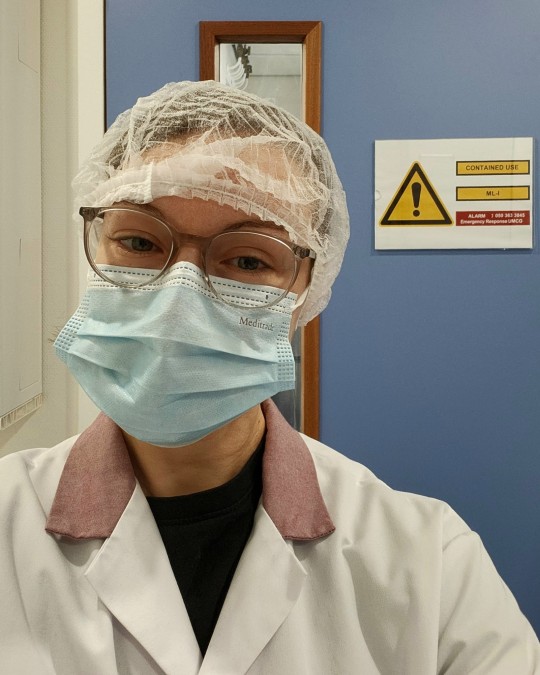
#science#women in science#research#postdoc#microbiology#microscope#cancer cells#cancer#cell culture#treatment#medical research#original content
13 notes
·
View notes
Text

Not something I’d normally post but I found these flower-shaped cell colonies at the bottom of a shotglass. Science tumblr can y’all help me figure out what they are?
7 notes
·
View notes
Text
Petri Dish: A Novel Approach to Microbiology Exploring the Utility of This Useful Tool

What is a Petri Dish?
A Cell culture dish, also known as a Petri plate or culture dish, is a shallow circular glass or plastic dish that has a lid and is used to hold solid or semi-solid culture media. The most common type of Cell culture dish is an 88-100 mm diameter round dish made of clear polystyrene or glass. The lid is made of an inert transparent material like plastic or glass so that microbial growth inside can be easily monitored under a microscope. History of the Petri Dish
The Cell culture dish was invented in the late 19th century by German bacteriologist Julius Richard Petri as a reproducible and standardized device for growing microorganisms under controlled conditions. Prior to the invention of Cell culture dishes, biologists would use hanging drop preparations or flasks and jars, which made it difficult to isolate and count individual colonies. Petri realized that being able to uniformly disperse nutrients over a sterile flat surface would allow precise analysis of bacterial growth. His design revolutionized microbiology research by enabling microbial cultures to be easily maintained and studied. Uses of the Cell culture dish
Cell culture dishes are ubiquitously used in microbiology labs for culturing and counting microbial colonies. Some common uses include: Bacterial Isolation and Colony Counting
To study bacteria in a pure culture, a small amount of nutrient medium is poured into a sterile Cell culture dish and allowed to solidify. Then, a sample containing the bacterial culture is spread or streaked over the surface and incubated. Individual bacteria will grow into visible colonies that can be isolated and studied separately. Cell culture Petri Dish enable precise quantification of colony forming units. Microbial Growth Studies
By varying conditions in Cell culture dishes like temperature, pH, gas composition, and nutrient levels, microbiologists can study how these environmental factors affect microbial growth rates and patterns. This helps characterize optimal growth requirements of different microbes. Antibiotic Sensitivity Testing
Antibiotic sensitivity of bacterial isolates can be determined by growing them on an agar plate containing antibiotic discs or gradients. The size of inhibition zones around the discs indicates whether the bacteria are susceptible or resistant to that drug. Microbial Interaction Studies
Co-culturing two different microbes on the same agar surface enables studying phenomena like symbiosis, competition, and antimicrobial activity between species. Presence or absence of distinct growth zones reveals if there is inhibition or stimulation between the interacting organisms. Types of Media Used in Cell culture dishes
Depending on the microbes being cultured and purpose of experiment, Cell culture dishes can contain different solid culture media that provide optimal growth conditions. Some commonly used media include: Nutrient Agar
A general purpose medium made with peptones and meat extract that supports the growth of non-fastidious bacteria. Nutrient agar plates are often used for initial culturing of clinical and environmental samples. Blood Agar
Also known as Columbia agar or CNA agar, blood agar contains added blood to detect microbial haemolysis (breakdown of blood cells). This helps differentiate bacterial species based on their hemolytic patterns. MacConkey Agar
A bile salt-containing selective medium that inhibits most gram-positive bacteria and fungi, allowing isolation of gram-negative enteric bacteria. Lactose/sucrose fermenters in a sample can be distinguished on MacConkey agar. Sabouraud Dextrose Agar
An acidic formulation containing peptones and dextrose, used for culturing fungi and yeasts. Mold colonies can be easily distinguished from bacterial growth on SDA plates. Thioglycolate Broth
A reduced nutrient medium for culturing fastidious and anaerobic microbes. When poured into test tubes or deep dishes under mineral oil, it provides an oxygen-depleted environment for growth of strict anaerobes. Applications of Microbial Culture in Cell culture dishes
Overall, the simple yet effective design of the Cell culture dish has made it one of the most indispensable tools in microbiology. It enables routine lab procedures like sampling, isolation, quantification and identification of microbes from various sources.
the controlled growth conditions of petri plates also aid mechanistic studies on fundamental aspects of microbial physiology, genetics, and ecology. Advances like automated colony counters have further expanded applications of Cell culture dish cultures in fields like food/water testing, medicine and biotechnology. Hence, this humble glassware continues making significant contributions to our understanding of the microbial world.
Get more insights on Petri Dish
About Author:
Ravina Pandya, Content Writer, has a strong foothold in the market research industry. She specializes in writing well-researched articles from different industries, including food and beverages, information and technology, healthcare, chemical and materials, etc. (https://www.linkedin.com/in/ravina-pandya-1a3984191)
0 notes
Text
the demons want me to stray but i am stalwart.
0 notes
Text
A project of love | ls2
Summary: where you have to do a project with your crush and you try not to fall for him.
Warning: none.
a/n: requested and dedicated by @bananaleclerc I hope you like it!! And yes, I need a break from posting so much 😂😂
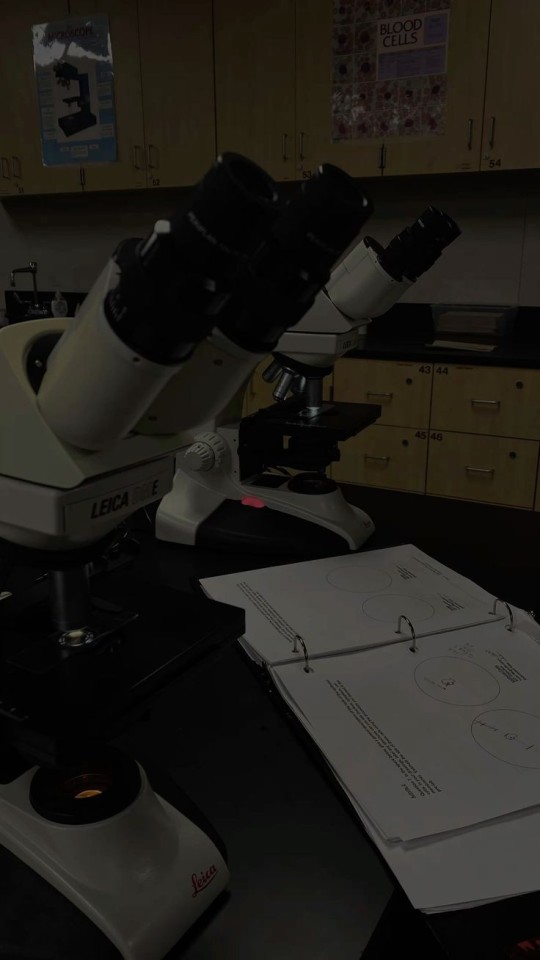

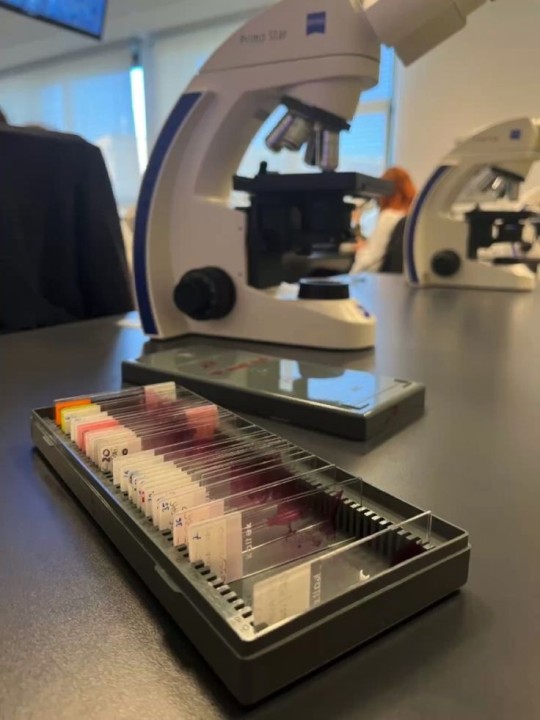
You're hunched over a textbook at a library table, surrounded by scattered notes and a half-eaten granola bar. Just then Logan enters the library, a whirlwind of energy and a backpack overflowing with what looks like every microbiology textbook ever written.
He slammed his books down next to you. “Hey there, study buddy! Ready to conquer the microscopic world?”
You jump a little, startled. He flashes a dazzling smile. “Uh, yeah, hi Logan. I was just... uh... reviewing.” You say, trying to sound casual.
“Awesome! Me too. Though, to be honest, my brain feels like it's about to explode from all these bacteria names.” He pulls out a chair dramatically and sits down. “Did you get a chance to look at the project outline Professor Davies sent? Apparently, we're germ-fighting partners!”
Your stomach flips. Internally screaming, you manage a smile. “Yeah, I saw it. Partnered up, huh? Makes sense, I guess.”
“Definitely! We balance each other out, right? You with your quiet genius vibe, and me... well, I bring the enthusiasm.”
You laugh nervously, a blush creeping up your cheeks.
“I wouldn't call myself a genius, but hopefully, I can keep up with your... enthusiasm.”
“Oh, you will, trust me. So, what do you think? Should we start with some foundational stuff, or dive straight into the exciting world of, like, antibiotic resistance?” he grins.
You take a deep breath, trying to focus. “Maybe foundational stuff first? That way, we're both on the same page when we get to the more complex topics.”
”Sounds like a plan! But hey, don't worry about keeping up. Like I said, I'm basically a walking microbiology encyclopedia. Just ask away if you get lost.”
You nod, but your mind is racing. Trying to focus on the project feels impossible now that you're so close to him.
You clear your throat. “Okay, so... cell walls of bacteria... what were we talking about those in lecture?”
Logan launches into an explanation, peppered with jokes and pop culture references. You try to concentrate, but all you can think about is the way his eyes light up when he talks about something he's passionate about.
Later, after a productive study session, you're packing your things.
“So, should we meet again tomorrow? Same time, same place?”
You feel your heart pounding. “Uh, yeah, sure. Sounds good.”
“Great! Hey, you seem a little quiet today. Everything alright?” he asks softly.
You force a smile. “Yeah, no, I'm just... tired, I guess... All this studying.”
“Studying can be draining! But hey, at least we're suffering together, right?” He winks at you. “See you tomorrow, germ fighter!”
He flashes another smile and throws you a peace sign before walking off. You sigh, a mix of frustration and a secret thrill bubbling in your chest. Studying with Logan might be the most nerve-wracking, yet strangely fun, experience of your university career so far.
You watch him disappear into the library crowd, a bittersweet pang in your chest.
You mutter to yourself. “Germ fighter, huh? More like heartbreaker.”
You gather your things, a sudden wave of determination washing over you. You like Logan, a lot. But you can't let that distract you from the project. You take a deep breath and head out of the library, a plan forming in your mind.
***
The next day, you arrive at the study table a few minutes early. You've spent the morning making flashcards – not just on microbiology, but also on Logan's interests you've gleaned from his conversation snippets. Genetics? Check. Obsession with the movie "The Andromeda Strain"? Double check.
He bursts in, a little late and slightly out of breath.
“Sorry I'm late! Professor Davies got us sidetracked talking about her research on bioluminescent bacteria. Apparently, there's a kind that glows neon green – can you believe it?” He says hurriedly, making you laugh a little, just then he notices the flashcards on the table. “Whoa, flashcards? You serious?”
You nod smiling, not as nervously as yesterday. “Just thought they might help us remember all this complex stuff. Besides, I found some fun facts related to the topics we need to cover. Maybe a little trivia can keep things interesting?”
His eyes wide at your words. “You got fun facts about bacteria? Okay, you officially win coolest study partner ever! Shoot, let's hear one.”
You pick up a flashcard and grin. Maybe studying with Logan won't be so bad after all. Maybe you can find a way to balance your academic focus with a sprinkle of something more.
***
The following week becomes a whirlwind of flashcards, late-night library sessions fueled by takeout, and a slow, simmering tension between you and Logan. Your knowledge of bacteria trivia becomes legendary, earning you surprised yet impressed glances from Logan. He, in turn, starts bringing coffee (with extra whipped cream for you, which you secretly adore) and peppering the study sessions with personal anecdotes, revealing a surprisingly deep and caring side beneath his bubbly exterior.
One rainy afternoon, hunched over a microscope analyzing bacterial cultures, Logan asks. “Hey, you ever wonder what those bioluminescent bacteria actually look like in real life?”
You glance up, surprised by the sudden seriousness in his voice. “Not really.” you admit, “but Professor Davies said she has some under a special microscope in her lab. Maybe we could ask if we could take a peek after our next class?”
He grins, a mischievous glint in his eyes. “Perfect... We can make it a little research adventure.”
The stolen glance you share sparks a warmth in your chest, a silent acknowledgement that this is more than just a study session. The next day, after you convince a hesitant Professor Davies to let you glimpse the glowing bacteria, you find yourselves alone in the dimly lit lab.
As you peer through the microscope, Logan leans closer, his shoulder brushing yours. “Wow.” he whispers, “they're incredible.”
You hum in agreement, captivated by the tiny emerald lights dancing before your eyes. The silence stretches, charged with unspoken emotions. You can feel the heat radiating from him, his breath tickling your ear.
Suddenly, the lab door bursts open, revealing Professor Davies returning from her meeting. You and Logan jump apart, both cheeks flushing a deep red.
“Did you get to see them?” she asks cheerfully.
“Yes, Professor,” you stammer a little bit, “they're amazing!”
As the week progresses, the air between you crackles with a new awareness. You find yourself stealing glances at Logan as he talks, your heart skipping a beat when he laughs at one of your jokes.
During a particularly frustrating attempt at culturing E. coli, you blurt out, “Ugh, these bacteria are so stubborn!”
“Hey,” Logan says softly, placing a hand on yours, “we'll figure it out together... Like always.”
His touch sends a jolt through you, and you meet his gaze, your eyes locked in a silent conversation. In that moment, you both know this partnership has become something more, a budding connection waiting to bloom amidst the petri dishes and microscopes.
The shared look hangs heavy in the air, the frustration of the stubborn E. coli forgotten. Logan's hand lingers on yours, his thumb gently brushing against your skin. You can feel the warmth radiating from him, and a blush creeps up your neck.
“Maybe,” he starts, his voice a low rumble, “we should take a break from these little buggers. Grab some coffee, clear our heads?”
You nod mutely, your heart pounding a frantic rhythm against your ribs. Stepping out of the lab, the rain has stopped, leaving the air fresh and clean. As you walk side-by-side, a comfortable silence settles between you. You steal a glance at Logan, his profile sharp against the setting sun.
Reaching the familiar coffee shop you frequent, you order your usual, Logan opting for his favorite with extra whipped cream (a detail that makes your stomach flutter with a strange mix of amusement and affection). Settling into a quiet corner booth, you both sip your drinks, the tension still simmering beneath the surface.
“Thanks for sticking with this project,” Logan says, his gaze fixed on you. “It wouldn't have been nearly as fun without you.”
A shy smile graces your lips. “It wouldn't have been so bad with you either.”
He leans closer, his eyes searching yours. The air crackles with unspoken desire. In a voice barely above a whisper, he asks, “Can I do something?”
Your breath catches in your throat. You nod hesitantly, a shiver running down your spine. He closes the distance between you, his hand cupping your cheek. His touch is soft, sending a jolt of electricity through you.
The kiss is tentative at first, a brush of lips that sends a wave of heat through your body. But then, something shifts. He deepens the kiss, his hand moving to cradle your head, tilting it for better access. You melt into him, the taste of coffee and something uniquely Logan swirling on your tongue.
The kiss is brief, broken by a gasp for air. He leans his forehead against yours, his chest rising and falling with each ragged breath. Your eyes flutter open to meet his, a goofy grin plastered across his face.
“Wow,” he breathes, a mixture of awe and amusement in his voice.
You can only manage a shaky smile, your heart overflowing with a mix of exhilaration and nervousness. The world seems to tilt on its axis, and for a moment, only you and Logan exist in this small corner of the coffee shop.
As you pull back and smile, a newfound confidence sparks within you... Maybe this partnership, born amidst bacteria and microscopes, could blossom into something more. And you, for one, are eager to see where it leads.
#formula one x reader#f1 x you#logan sargeant#logan x reader#logan sargent x reader#logan sargeant imagine#logan sargeant x you#logan x you#logan x y/n#logan sargeant fluff#mariclerc fics
134 notes
·
View notes
Text
Notes from a deity researcher #1
The Small One
I met this god in the California desert where the Holy Laboratory of the Microscopic Deities (HLMD) is located. The location put me in mind of a university campus. There was a buzz of curiosity in the air.
The followers were intriguing, as most Holy Scientists are. These were a specific sect focusing on microbiology. Most were very excited about my research. One young lady said "research is our form of worship" which delighted me to no end. Most followers I meet are standoffish and territorial of their practices and culture.
The followers wore strange robes, made to replicate the images of microscopic animals. The cut of their clothes was often round and shapeless. It was often impossible to differentiate between the genders of the followers, as they all tended to have short, practical hairstyles.
The method of conversing with The Small One was fascinating. First, I was instructed to swab the inside of my cheek, which the Holy Lab Tech then slipped into the microscope. As I looked into that contraption, I felt my whole body come alight. It always feels different with every god I meet. I had a complete and total awareness of every aspect of my being. I felt the friction between each cell, the dull snap of my synapses, the trickle of my hormones. It was a churning cacophony of biological machinery.
The god looked like a cluster of grey bubbles.
"Hello," it said, in my own voice. It hummed up the microscope and spoke through my own vocal chords.
My mouth felt slack, so I did not reply right away. I leaned all my weight onto where my eye rested on the cylindrical tube of the microscope. It took me a second to get used to the feeling. The ache of metal against my eye socket returned me to my senses.
But alas, it had vacated. The strange feeling left my body, and I was looking at regular spit cells once again.
The Holy Lab Tech patted my arm in sympathy, "It never stays for long," she said.
I tried to speak with it a couple more times during my stay, but to no avail. I was devastated.
#writeblr#writers#writing#gods#worhsip#science#science gods#writing snippet#short story#worldbuilding#story practice#microscope#microbiology#mythology#modern gods#literature#critique welcome#writers on tumblr#writerscommunity#creative writing
19 notes
·
View notes
Text
tagged by @brown-little-robin to share 5 topics I could talk on for an hour without preparing any material!!! mwah thank u 🫶
- poetry: i am writing video essays about poetry every time i take a shower. i just!! i love talking about Writing Poetry about what works and what doesn't about how to effectively achieve a rhythm or a mood or convey the message you want to convey ITS SO FASCINATING TO ME I ADORE IT
- microbiology slash immunology: hashtag woman in stem. but like the problem with this is that nobody (who's not already into it) wants to listen to me talk about it because i like it in the way that i find everything we learn in class interesting. i have. Very Few fun facts. and to people who have no idea what im talking about its not very interesting to hear me talk about what the expression of CD62L and CD44 markers on T cells means. you know . anyways so CD62L also called L-selectin is[GUNSHOT]
- popular "christian" (mostly american) culture (sorry for stealing this one robin but i do this So Much. like as a horrified outsider): its been years and i still cant wrap my head around megachurches (among other things). WHAT DO YOU MEAN!!!! instagram lovesss going omg you're a christian right. here's the worst take you've ever seen in your life. and i watch it all out of morbid fascination and then i send it to my friends and we hold a socratic seminar about it so you can imagine that instagram. keeps suggesting those things to me
- writing but specifically prose!! and stories!!: this is separate from poetry. i LOVE talking about story structure and how it works and how you write it out and what you include and dont include and the writing style brings to it. its so. tears it apart with my teeth
- this one is niche but symbolism in the books of the law: when i was a kid i had 3 Bible books on rotation and one of them was leviticus. which is kind of ridiculous considering that at that age i had No idea all of that was some type of symbol i just thought it was interesting. but yes Every Single Thing in there is a symbol. from the smallest piece of the tabernacle to a singular step in a sacrifice its kind of crazy!! i adore it!!!!
tagging: @ghosts-and-blue-sweaters @idontwantrobyntodie @sunflower-chai @thatfriendlyanon
#julia.txt#THANK U AGAIN#i love rambling . forever#honourable mention: i could probably give a class on embroidery stitches for an hour. i think i could do it#tag game#as always for ppl ive tagged it is absolutely no pressure yay
9 notes
·
View notes
Text
Culturing Bacteria in a Petri dish With Agar; an experiment/observation

Today's post is quite different from the usual;
So, we had to do a project in the educational institution I study in; Which was growing bacteria in a Petri dish with agar.
Today, the results came in, but our professor insisted that we have to throw the dishes in the bin. I didn't give up there; after talking to her for a short amount of time, she accepted that I can take the dish with me to my flat, and have a look at it with microscope.
I still cannot comprehend why other students were disgusted by them; they are beyond wonderful.
Allow me to explain this astonishing journey:
What exactly is agar?
Well, agar, derived from the minute aquatic organism known as seaweed or algae, specifically the types Gelidium or Gracilaria, is a widely employed gelling agent. Found abundantly in the coastal regions of East Asia, particularly Japan and South Korea, it undergoes a process of cleaning and extraction to obtain agar in its usable forms of dry strips, flakes, or powdered consistency.
Now, when it comes to the realm of cell and bacterial culture, agar assumes a pivotal role as a solidifying and gelling medium within culture media. Its remarkable gel-forming properties allow for the creation of a three-dimensional matrix, offering an ideal environment for the growth and sustenance of cells and bacteria alike. Nutrients and metabolites find efficient transfer within this agar-based culture medium, while its structural integrity ensures the confinement of cells to designated areas.
Agar's utilization in cell and bacterial culture provides a multitude of advantages, including its ease of implementation, stability, and facilitation of cell separation procedures. The versatility of agar finds application in diverse fields, from microbiology to biotechnology and pharmaceutical industries.
Bacteria can be found on any surface, anywhere.
I decided to pick them up from my shoe soles.
After extracting bacteria from the soles of the shoes, I cultured them in an agar-containing Petri dish. After one week, I observed bacterial and fungus growth in this environment. Here are some images I captured with my microscope:
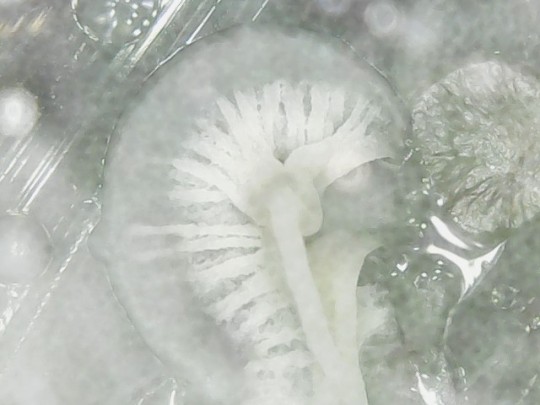
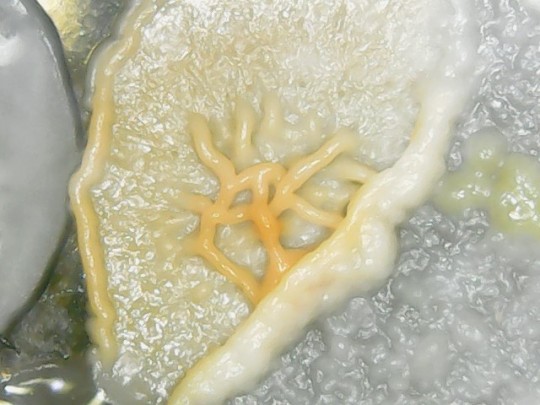
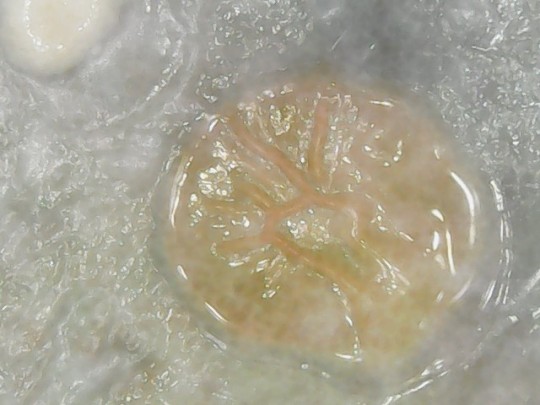
Wonderful, aren't they?
ND
#bacteria#fungus#deduction#tumblr#deducter#deduce#deductive reasoning#science of deduction#tumblrpost
42 notes
·
View notes
Note
My only question is "CHANGELINGS??" Like idek where to start. I love the concept of changelings. Educate me on how they fit into your wip?
Yay, a fellow changeling enjoyer! There's just something about the concept I adore, from the most mythic versions, to the dnd species, to superheros. But let's talk my version of changelings!
The history of changelings on Illaros is murky. They're associated with the Fair Folk and it's speculated that they're some sort of escaped experiment, but no one knows for sure. The only hard and fast fact is that changelings are more prevalent in areas the Fair Folk frequent. (Those areas being the elven lands of Nabafyr and Skysheer).
In appearance, changelings are... funky. They are humanoid shaped, but have no face. Their skin is fibrous, slimy, and pink or purple in color. They have a tail and their "face" is ringed by five fins. They also have no bones on account of being single-celled organisms. I get more into their biology here, but to summarize, they're like big amoebas.
Their headfins are what allow them to transform. Here's a sketch of that process!

Generally, changelings have an easier time assuming the faces of the sort of people they grew up around. So, a changeling raised by elves will have an easier time with elven faces, while a changeling raised by lizardfolk will have an easier time with lizardfolk. Skilled changelings can mimic about any humanoid, but most will have trouble with a folk they're unfamiliar with. There are tales of changelings able to mimic animals, but these are largely bullshit.
Apart from their shape-shifting, changelings can also transition between a solid and liquid shape due to having no bones and mostly being water on the inside. They tend to liquify when sleeping or in moments of high emotion. Your average changeling can fit through about a one inch gap, making them very hard to hold onto. They're also surprisingly hard to injure because of this, as they can bend around a blow or go splat when they fall from a great height and scrape themselves up just fine.
As cool as they are biologically, changelings kinda get the shaft culturally. Due to a lot of random kidnappings and genuine atrocities, elves hold a strong distrust of anything Fair Folk adjacent. This distrust creates a cycle where a lot of changelings can only find work as thieves and prostitutes, which further cements their bad reputation. In Skysheer, there's also a tradition of using changelings as court freaks. Changelings are traded between lords as toys and treated just as disposably. For these reasons, many changelings live in secrecy. It's rare for a changeling to ever meet another of their own kind. Usually, the only pairs you'll find are parent and child. (Fun fact: Changelings can reproduce either sexually or asexually!)
That's about all I can think of right now. Feel free to ask any questions, I'll be glad to answer! These guys are my little macro-microbiology project and they make me so happy :)
Thanks for the ask!
9 notes
·
View notes
Text
Decoding the Pharmacological Symphony of Turkey Tail Mushroom: An In-Depth Analysis of its Chemical Composition, Immunomodulatory Mechanisms, and Implications in Cancer Therapeutics 🍄🔬
Salutations, esteemed Tumblr intellectuals! Brace yourselves for a cerebral sojourn into the pharmacological labyrinth of Turkey Tail Mushroom, an exploration that transcends the ordinary and delves into the intricate interplay of its chemical constituents, the sophisticated mechanisms of immunomodulation, and the far-reaching implications of its therapeutic potential in the intricate landscape of cancer biology. Prepare your minds for an expedition into the realms of molecular complexity, immune orchestration, and therapeutic promise. Grab your favorite scientific journal, a pen, and perhaps a lab coat, for this journey is not for the faint of intellectual heart. ☕📚
Chemical Symphony: An Elaborate Choreography of Bioactive Compounds:
In the molecular ballet of Turkey Tail, bioactive compounds are the principal dancers, each executing a meticulously choreographed routine. Polysaccharopeptides (PSPs), intricate glycoproteins with immunomodulatory acumen, command attention. Through the fine-tuned modulation of immune responses, these compounds stimulate various facets of the immune system, orchestrating an elaborate dance that amplifies the body's ability to recognize and eliminate neoplastic cells. Concurrently, beta-glucans, linear glucose polymers, contribute to this biochemical ballet by fine-tuning immune cell responses, enhancing the overall antitumor immune surveillance.
Navigating the Anti-Tumor Terrain: A Molecular Expedition:
Our scientific cartography navigates the expansive anti-tumor terrain mapped out by Turkey Tail's polysaccharides. The inhibitory effects on tumor growth and metastasis are akin to molecular fortifications against cancer progression. Through intricate mechanisms involving the activation of natural killer cells, cytotoxic T cells, and macrophages, Turkey Tail emerges as a sentinel, curbing the unchecked proliferation of malignant cells. Additionally, its antioxidative prowess, rooted in compounds like ergosterol peroxide, further shields cellular structures from oxidative stress, a nexus in carcinogenesis.
Immersive References: Nourishment for the Inquisitive Intellect:
1. Stamets, P. (2012). "Turkey Tail: Old Medicine, New Hope." Integrative Medicine: A Clinician's Journal, 11(1), 54–59.
- Stamets' exposé weaves a tapestry connecting ancient medicinal wisdom with contemporary insights, shedding light on Turkey Tail's multifaceted potential.
2. Wasser, S. P. (2011). "Current findings, future trends, and unsolved problems in studies of medicinal mushrooms." Applied Microbiology and Biotechnology, 89(5), 1323–1332.
- Wasser's comprehensive review acts as a meta-analysis, synthesizing the current knowledge landscape of medicinal mushrooms, positioning Turkey Tail within the broader discourse.
3. Sun, J. E., Ao, Z. H., Lu, Z. M., Xu, H. Y., Zhang, X. M., & Dou, W. F. (2002). "Antihyperglycemic and antilipidperoxidative effects of dry matter of culture broth of Inonotus obliquus in submerged culture on normal and alloxan-diabetes mice." Journal of Ethnopharmacology, 95(2-3), 285–292.
- In the realm of metabolic interactions, this study offers a glimpse into the potential implications of Turkey Tail compounds in managing hyperglycemia and lipid peroxidation.
4. Kidd, P. M. (2000). "The use of mushroom glucans and proteoglycans in cancer treatment." Alternative Medicine Review, 5(1), 4–27.
- Kidd's magnum opus serves as a compendium, dissecting the applications of mushroom-derived compounds in cancer therapeutics, providing a nuanced understanding.
Empowering the Community: A Call for Translational Excellence:
Knowledge is a potent elixir, yet its administration demands finesse. As we unlock the mysteries of Turkey Tail Mushroom, let us champion translational excellence, bridging the realms of bench and bedside. Always, without exception, seek the counsel of healthcare professionals, for personalized insights into the delicate interplay of molecular intricacies. Our collective journey extends beyond unraveling the pharmacological nuances; it's a clarion call to empower our community with the technical acumen to navigate the dynamic expanse of cancer research. 🌐💚
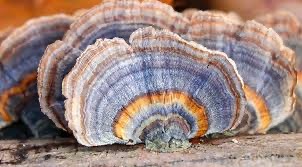
Your musings on this intricately detailed exploration are most welcome!
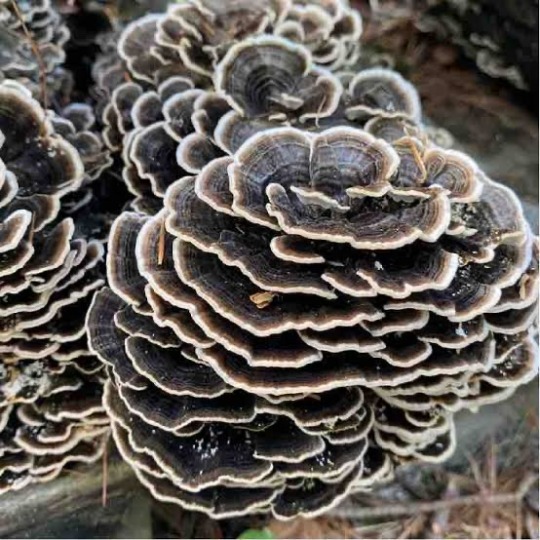
#science#biology#college#education#school#student#medicine#doctors#health#healthcare#mushrooms#turkey tail#chemistry#cancer#cancer treatment
26 notes
·
View notes
Text
Exploring Neuronal Cell Culture and 96 Well Plate Cell Seeding Density: Advancements in Cellular Research with Mediray
Cell culture techniques are pivotal in scientific research, offering insight into various cellular processes and their response to different conditions. Among the various types of cell cultures, neuronal cell culture plays a crucial role in neuroscience, allowing researchers to study the behavior and function of neurons in a controlled environment. One of the key components to the success of these experiments is ensuring the right cell seeding density, especially when using platforms like the 96-well plate, which is widely used for high-throughput screening. Mediray, a company specializing in high-quality laboratory products and services, provides tools and solutions to facilitate these crucial aspects of cellular research.
This article will delve into the significance of neuronal cell culture, the importance of optimizing cell seeding density, particularly on 96-well plates, and how Mediray supports these processes.
The Importance of Neuronal Cell Culture
Neuronal cell cultures offer a unique opportunity to study the functioning of the nervous system outside of the body. These cultures are essential for understanding neurobiology, investigating neurodegenerative diseases like Alzheimer’s and Parkinson’s, and developing therapeutic drugs. By using cultured neurons, researchers can simulate and study various conditions that affect the brain and nervous system.
There are several types of neuronal cultures, including primary neuronal cultures and immortalized cell lines. Primary cultures are derived from the nervous tissue of animals or humans and provide a more accurate representation of in vivo conditions. However, they are often more challenging to maintain, require specific conditions, and can exhibit high variability. Immortalized cell lines, on the other hand, are easier to maintain and have a more consistent phenotype, but they may not fully recapitulate the complex characteristics of primary neurons.
Neuronal cell cultures are typically grown on various surfaces, including glass, plastic, or coated wells. To ensure the cells adhere properly and exhibit appropriate growth patterns, surface coatings like poly-D-lysine, laminin, or Matrigel are commonly used.
96 Well Plate Cell Seeding Density: A Critical Factor
One of the most important factors to consider when culturing neurons in vitro is the seeding density—the number of cells placed into each well or culture vessel. This factor is especially critical when working with high-throughput screening platforms like 96 well plate cell seeding density. The seeding density can significantly impact the cell’s growth, differentiation, and behavior, which in turn affects the outcome of the research.
When preparing neuronal cultures on 96-well plates, researchers must carefully calculate the optimal seeding density to ensure that each well contains an appropriate number of cells. Too few cells may lead to poor differentiation, suboptimal signal detection, and unreliable results, while too many cells can cause overcrowding, reduced cell viability, and altered cellular behavior. For neuronal cell cultures, achieving the correct density is particularly important since neurons require more space to form connections and networks compared to other cell types.
Seeding Density and Neuronal Growth
The neuronal growth process involves the formation of axons, dendrites, and synapses. These processes are sensitive to both the density of the cells and the condition of the culture environment. If neurons are seeded too densely, they may not have sufficient space to extend their processes and may instead form clusters, leading to reduced network formation. On the other hand, seeding neurons too sparsely can result in isolated cells that do not form functional networks, which is critical when investigating neurological functions.
The 96-well plate provides an efficient and standardized method to study neuronal behavior under controlled conditions, but achieving the right seeding density is crucial to ensure reproducibility and meaningful results. A well-optimized seeding density promotes better cell-to-cell interaction, which is essential for neuron differentiation and network formation.
Best Practices for Seeding Neurons on 96-Well Plates
The process of seeding neurons in a 96-well plate begins with preparing the plate surface. The surface is usually coated with a material that promotes cell adhesion, such as poly-D-lysine or laminin. These coatings help ensure that neurons properly attach to the surface and develop the necessary structures for long-term survival and function.
Once the plate is prepared, the next step is determining the appropriate seeding density. This step is often guided by the specific goals of the experiment, the type of neurons being cultured, and the duration of the culture period. For neuronal cultures, the seeding density typically ranges from 5,000 to 50,000 cells per well, depending on the specific requirements of the experiment. For high-throughput screenings, where large numbers of conditions are tested, researchers often aim for a moderate density to ensure reliable results without overcrowding.
Cell Counting and Plating
To ensure accurate cell seeding, researchers use various techniques to count cells before plating. Automated cell counters or hemocytometers are commonly used to determine the cell concentration. Once the appropriate density is calculated, cells are carefully dispensed into each well of the 96-well plate, often with the use of a pipette or automated liquid handling system.
After plating, the cells are incubated in a controlled environment, typically at 37°C and 5% CO2, to allow them to adhere and begin growing. The medium is carefully monitored and changed as necessary to maintain optimal growth conditions. Over time, the neurons begin to extend their axons and dendrites, forming intricate networks that can be used for electrophysiological analysis, imaging, or drug screening.
Mediray's Role in Neuronal Cell Culture and High-Throughput Screening
Mediray is a company committed to providing high-quality products and solutions that support cellular research and neuronal cell culture. With a deep understanding of the challenges researchers face in maintaining healthy, functional cell cultures, Mediray offers a wide range of laboratory tools and equipment designed to optimize experimental conditions.
For researchers working with neuronal cultures on 96-well plates, Mediray provides top-tier reagents, coatings, and supplies that ensure optimal cell adhesion and differentiation. Their products are designed to work seamlessly with high-throughput platforms, offering precision and reliability in the preparation of neuronal cultures.
Mediray's support extends beyond just products; the company also offers expert consultation and guidance to help researchers determine the best practices for their specific experiments. From selecting the right cell culture plates to optimizing seeding density, Mediray’s team helps scientists maximize the success of their experiments and achieve reproducible results.
The Future of Neuronal Cell Culture Research
As the field of neuronal cell culture continues to evolve, new technologies and approaches are being developed to improve the accuracy and efficiency of research. High-throughput screening platforms like 96-well plates are expected to become even more integral in drug discovery and disease modeling, enabling the testing of thousands of compounds and conditions in a single experiment.
In addition to improving the efficiency of the research process, advancements in neuronal cell culture techniques are also allowing scientists to delve deeper into the complex behaviors of neurons. Researchers are now able to study neuronal networks, synaptic activity, and cellular responses in unprecedented detail, thanks to the combined efforts of innovative companies like Mediray and ongoing advancements in biotechnology.
Conclusion
Neuronal cell culture and the optimization of cell seeding density are critical factors in advancing our understanding of the nervous system, neurological diseases, and potential treatments. The 96-well plate provides an efficient, standardized method for conducting high-throughput experiments, but achieving the optimal seeding density is essential for accurate, reproducible results. Mediray plays a pivotal role in supporting this research by providing the tools and expertise necessary to cultivate neurons and maintain optimal experimental conditions. With their commitment to quality and innovation, Mediray is helping pave the way for groundbreaking discoveries in neuroscience.
0 notes
Text
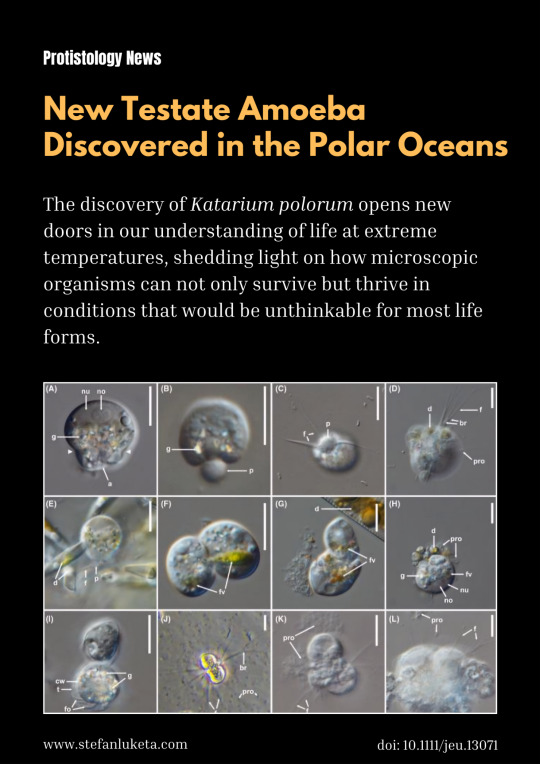
A few days ago, scientists published an exciting discovery in the icy waters of the Arctic Ocean: Katarium polorum, a new cold-loving amoeba that’s turning heads in the world of microbiology. Discovered by Marcel Dominik Solbach, this tiny organism is only about 15 micrometers in diameter, but it’s packed with some pretty impressive survival strategies for living in one of the most extreme environments on Earth.
What makes Katarium polorum stand out? For starters, the organism is encased in an organic shell, with a small round opening. From this opening, a threadlike extension of cytoplasm often pushes out, forming delicate, branching pseudopodia. These slender extensions are used to explore the surrounding environment—almost like tiny feelers on a quest for food or new territory. Interestingly, these amoebae don’t seem to be ones for settling down. Instead of attaching to surfaces like many other microorganisms, they float freely in their surroundings, continuously extending and retracting their pseudopodia, as if navigating an ever-changing landscape.
The primary diet of Katarium polorum seems to be diatoms, though it has also been seen feasting on bacteria. But it’s not just the way it moves or feeds that’s captivating scientists—it’s also how it behaves as it ages. In older cultures, the amoeba begins to clump together, sometimes forming clusters of several or even dozens of cells. Among these groupings, researchers have found enormous, multinucleate cells—known as "monstrosities"—offering a fascinating look at the amoeba’s biological complexity. These giant cells seem to represent a key piece of the puzzle when it comes to understanding how this organism thrives in the frigid waters of the Arctic and Antarctic Oceans.
Another intriguing feature of Katarium polorum becomes visible in these older cultures: a distinct layer of reflective granules or crystals that form a horizontal band within the cell’s cytoplasm. Despite these changes, the amoeba remains active, continuing to feed, move, and divide. It’s as if it is constantly adapting to its harsh surroundings, constantly evolving to survive the coldest places on the planet.
The discovery of Katarium polorum opens new doors in our understanding of life at extreme temperatures, shedding light on how microscopic organisms can not only survive but thrive in conditions that would be unthinkable for most life forms.
For the curious and the scientifically minded, you can read more in the full research paper here: https://doi.org/10.1111/jeu.13071
#nature#biology#microbiology#microorganisms#protists#testate amoebae#zoology#amoeba#life science#science#protistology#microscopic organisms#microscopic#microscope
2 notes
·
View notes
Text
I have a patient who is not currently sexually active who wanted STI screening, so I ordered gonorrhea and chlamydia test with urine. It is negative for gonorrhea and chlamydia, but is positive for mycoplasma hominis and ureaplasma species. Although she is asymptomatic, I am going to treat her with antibiotics. I haven't had this happen yet.
Microbiology – Mycoplasma hominis and Ureaplasma spp are small bacteria that lack a cell wall and cannot be visualized by Gram stain. They are part of the normal genital flora of sexually experienced individuals. Transient neonatal colonization also occurs.
●Associated genitourinary syndromes – These organisms have been associated with various genitourinary tract infections (eg, pelvic inflammatory disease [PID] for M. hominis and nongonococcal urethritis for Ureaplasma spp), as well as complications of pregnancy, but their precise roles in some of these conditions have been difficult to define.
●Populations at risk for extragenital infection – M. hominis and Ureaplasma can cause severe infection in specific populations. Neonatal infections include meningoencephalitis, bacteremia, and pneumonia, mainly in preterm infants. In immunocompromised patients, severe systemic infections (eg, bacteremia and bone, joint, pulmonary, and central nervous system [CNS] infections) have also been described; extragenital infections can also occur following trauma or instrumentation of the genitourinary tract.
●Clinical suspicion and diagnosis – M. hominis or Ureaplasma spp infection should be suspected in preterm neonates and immunocompromised patients with extragenital infections when initial microbiologic testing is negative or if the patient does not improve on therapy for more common pathogens. Both culture and nucleic acid amplification tests can be used for their detection; if these organisms are isolated, susceptibility testing should be performed, if available.
●Treatment
•Neonatal infection – For neonates, data on the treatment of M. hominis and Ureaplasma spp infections are extremely limited. M. hominis is variably susceptible to clindamycin, tetracyclines, and fluoroquinolones. Clindamycin should be dosed according to postmenstrual age; experience with doxycycline and fluoroquinolones in premature infants is limited. If treatment is warranted for Ureaplasma spp, azithromycin is an option.
•Extragenital infection in other populations – For extragenital M. hominis and Ureaplasma spp infections in nonpregnant individuals, we suggest moxifloxacin or levofloxacin (Grade 2C). Doxycycline is an appropriate alternative, although resistance may be increasing; it is also reasonable to use combination therapy (eg, moxifloxacin or levofloxacin plus doxycycline). Clinical data on the optimal treatment of these organisms are limited; our preference for certain regimens are based mainly on in vitro susceptibility data and safety in different populations.
•Genital infection – Routine testing for M. hominis or Ureaplasma spp in patients with uncomplicated genital tract disease is not warranted. If these organisms are detected in patients with a genitourinary syndrome (eg, nongonococcal urethritis or PID) and are thought to be the cause of the symptoms, we suggest doxycycline (Grade 2C).
3 notes
·
View notes
Text
It’s me, hi, I’m the problem, it’s me.
LoneSurvivor/My Gorram Ship on Ao3
37 year old AuDHD Microbiology undergrad (due to graduate this year), residing in England and attempting to raise three daughters single handledly.
I like to use my knowledge of science and random past hyper focuses to either twist Mass Effect canon or completely smash it, depending on my mood.
Current WIP: ME3 and beyond, in which my most monstrous headcanon plays a huge role. Oh, and Shenko have a baby.
Since the accidental discovery of Deinococcus radiodurans forming a symbiotic relationship with the eezo deep in the mines of Omega, Project Lazarus grew in scope. First, it negated the need for an implant or an amp, infusing each cell with biotic power.
But it could do so much more, and without imagination, intelligence was useless. Fortunately, Lawson’s father designed her with an abundance of both, so the swarming mass she called a nano-assembly inspired rather than intimidated.
She manufactured a considerable amount of stock to stimulate evolutionary change via parasitism and symbiosis, two cornerstones of evolutionary change. It incorporated more and more of the subject’s DNA with each generation, failing more than she succeeded. But no matter; that was to be expected, and each attempt provided more insight.
The Illusive Man’s primary objective for this project was to create something that could repair and regenerate itself both upon immediate, minor injury and some hours later in the event of catastrophic injury. Something that could, in theory, survive the vacuum of space if it should happen again.
After completing the retinal scan, the door opened. Her heels clacked as she crossed the room and removed the tray of cell cultures from the incubator, placing them under the microscope. This part she worked on alone, long after the multi-level lab fell quiet and no longer bustled with the staff of Project Lazarus. Because her boss was slowly losing the ability to listen to reason, this part must remain secret.
Intelligent enough to fear her creation, the most crucial aspect of this, for Lawson, involved the subject being immune to indoctrination, which meant including just enough fragments of Reaper code scattered along the DNA to ensure that any artefact, or any other horror they had not yet discovered, would recognise the subject as self.
Her hands trembled as she re-checked the data not once, not twice, but thrice, before asking EDI to check again, then became engrossed in reviewing the most recent data from the wake-up cycles of the subject, scrutinising for any indications of neurological deterioration. There were none, which led her to the next task - producing the thick, metallic fluid.
"I’m sorry, Shepard," she murmured, taken aback as she realised it was the first time she had addressed the subject by name. She then proceeded to load the substance into the nano syringes.
#mass effect fanfic#mass effect fanfiction#femshep#canon divergence#kaidan alenko#angst#mass effect#shenko
7 notes
·
View notes
Text
Uni Sketchdump pt 2
HELLO! Since i passed microbiology, here the micro-sketchdump

Listen, it's not my fault. It's the prof who said biofilm. and it was monday. morning.

Terrible and vague studies of our boys

And my first attempt at lestrade.

We were talking of cellular wall in bacteria and yep, i was thinking to chains

And then to tea.

This is an old meme from my old university. A stupid answer i gave once.

And i'm RIDICULOUSLY proud of this retired holmes washing dishes. Geni is the italian for both genes and geniuses. So here you have a genius housekeeping instead of like... the most essential genes in a cell.

And that little spore needed a fancy roman tunic.
And i tend to be sleepy on monday morning


VERY sleepy.

And lestrade being perplexed at cell growth.

While Holmes hopes tobacco is NOT finishing. That would be bad.
But man likes growing cells!

And his cell culture works!

Mycroft and watson discussing how Holmes is not in fact an autothrophic organism.
These are too from a discussion with a dear friend


I used to watch spongebob as a kid
ALCOHOLIC FERMENTATION IS IIIIIN

Let these two get drunk

Or maybe have them eat. Talking about it, lattic fermentation to produce dairy

Tried a shot at peter cushing holmes... not come out well, tbh.

And once again, holmes. You can't live on air!
And anammox bacteria made me think to aronnax

Though my design for it is DEFINITELY bad
4 notes
·
View notes